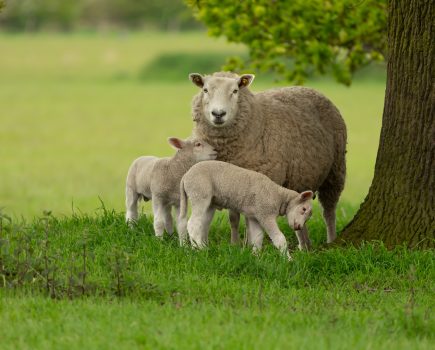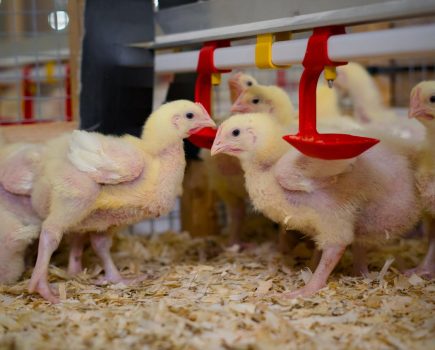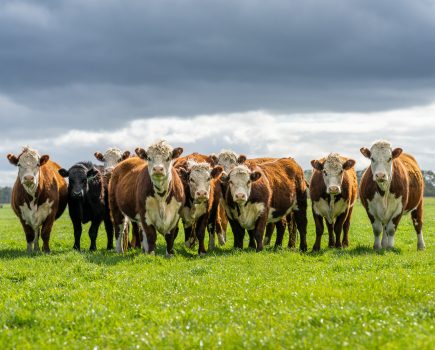I am writing this in the midst of summer, with the showing season and months of haymaking, silaging and combining in full flow. While we have seen the greatest rises in fertiliser and feed prices for many a year, the prices seen in the prime and cull markets, as well as for milk, have started, for many, to move in the right direction. Summer is a season where most of us are focusing on the arable enterprises of our farms, but as we look to the months ahead and the drilling of winter wheat, we should also be planning for housing our livestock and preparing for the winter months, writes Jack Balkham, Westpoint Farm Vets.
Housing cattle is a time of huge change in environment and diet and can really knock back cows and calves alike. When feeding cows, we often say that we are feeding the rumen rather than the cow. The rumen contains billions of bacteria which are required to produce protein as well as vitamins for the cow to absorb lower down the gastrointestinal tract. The population of bugs varies and adapts in number and nature depending on the diet being fed, and as such will take on average six to nine weeks to adapt to significant changes in diet.
Too rapid a change in diet can lead to ruminal acidosis, a serious condition of cattle which can lead to reduced intakes, weight loss, scour, liver damage/abscessation and death. To reduce any risks, it is advisable to transition the new diet for three weeks before housing, thus preparing the bug population for the new, preserved forage-based diet. The same applies to calves, and in order to maintain optimal growth rates, creep and buffer feeding is advisable.
Not only should we buffer feed and transition our cows in terms of diet but we should be planning our feeding strategy for the duration of housing. This means performing analysis on conserved silage to determine nutritive value and identify any potential shortfalls in energy, protein, minerals or other micro-nutrients. It also allows us to properly inventory our preserved forage to ensure we can feed a balanced diet throughout housing. Should we need to buy in, we can incorporate this to prevent further abrupt dietary changes and purchase the additional feed at the most cost-effective time by identifying the need early.
One of our key decisions is when to house stock. There are many variables over and above prevailing weather conditions and preserving pastures to allow recovery and growth for the next grazing season. We are primarily concerned with maintaining optimal growth rates, and so it is important to weigh youngstock every four to eight weeks to monitor this and to body condition score adult cattle. Are they losing weight, and therefore is the grass quantity and quality what we require? Is there an underlying parasite problem? Do we need to start supplementary feeding earlier?
It is useful to assess the body condition score of adult cattle to inform our decisions as to the timing of weaning. Thin cows will benefit from earlier weaning, whereas over-conditioned cows may be weaned later on to prevent further weight gain and increased risk of difficult calving and peri-parturient diseases.
Housing is a key risk period for pneumonia as cattle are brought closer together into an environment that is inherently less well ventilated than pasture. It is helpful to give the stock protection through vaccination ahead of housing to allow for the build up of immunity prior to the risk period. Discuss pneumonia risks and prevention with your vet now to maintain a healthy herd. Clipping of backs is a tried and tested method to reduce disease, which it does by reducing the sweating of cattle to reduce humidity within the sheds. Humidity and ventilation are key areas of housing as risk factors for disease and a veterinary assessment of housing can help you to identify areas to improve.
When we think of housing, we often think of the need for parasite control. It is incredibly useful to consider parasite control across the year and to accurately determine the requirement to treat. While we wish to have worm, fluke, lice, and mite-free cattle it is important that we remember the risk of over-treating and the threat of anthelmintic resistance development. The aim of treating at housing is to eliminate parasite burdens at a time when reinfection risk is low, thus promoting optimal growth rates. By using faecal egg counting (which can often be done in house at low cost and rapid turnaround – contact your vet to discuss further) we can often reduce the use of wormers, prolong their usefulness and reduce the cost and labour of unnecessary treatments.
When it comes to worming your stock there are several points to remember:
• Weigh the stock being treated and dose to the heaviest in the group
• Correct calibration of dosing guns
• Check the product is effective against those parasites present on farm
• Make sure it is administered by the correct route (oral drench, injection or pour-on).
Housing is also a useful time to assess mobility issues in cattle, allowing the treatment of lameness, diagnose pregnancy by ultrasound examination and have your cows’ blood sampled to identify any trace element deficiencies, guiding supplementation by bolus, feed or mineral lick.
So enjoy what’s left of summer, in a beer garden where possible, pint of Hophead in hand, and plan ahead for housing. I look forward to seeing you all for a chinwag and a pint at the upcoming ploughing matches and on farm through the autumn ahead. Cheers!







